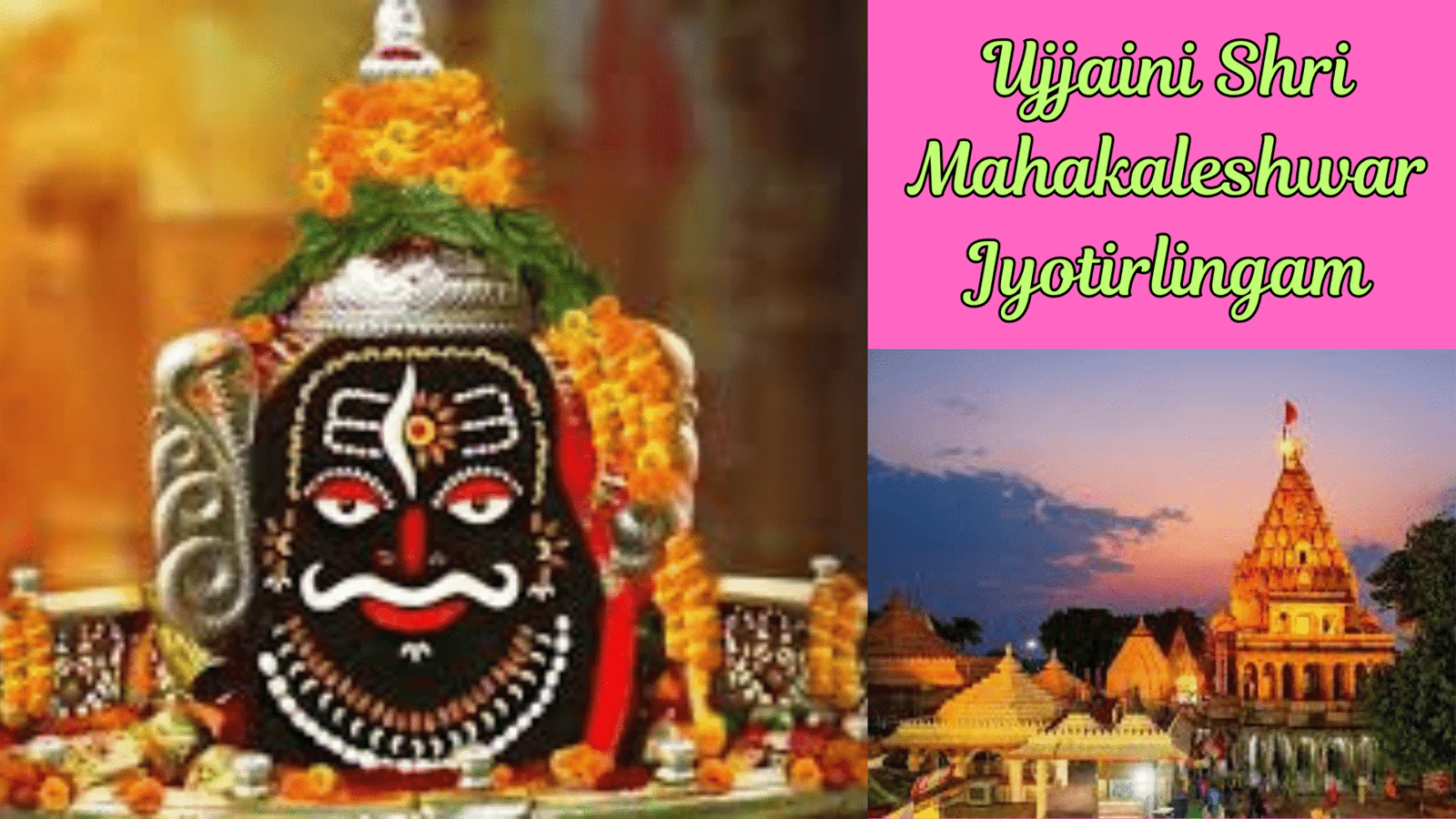Ujjaini Shri Mahakaleshwar Jyotirlingam: Third Jyothirlingam in the 12 Jyothirlinga Series
India is the land of ancient wisdom, eternal devotion, and timeless temples. Among the twelve sacred Jyotirlingas of Lord Shiva, the Shri Mahakaleshwar Jyotirlingam of Ujjain holds a distinct and revered place. Located in Madhya Pradesh on the banks of the holy Kshipra River, the Mahakaleshwar Temple is not just a Jyotirlinga—it is the only one where Shiva is worshipped as a Swayambhu (self-manifested) lingam and as Mahakala, the Lord of Time and Death.
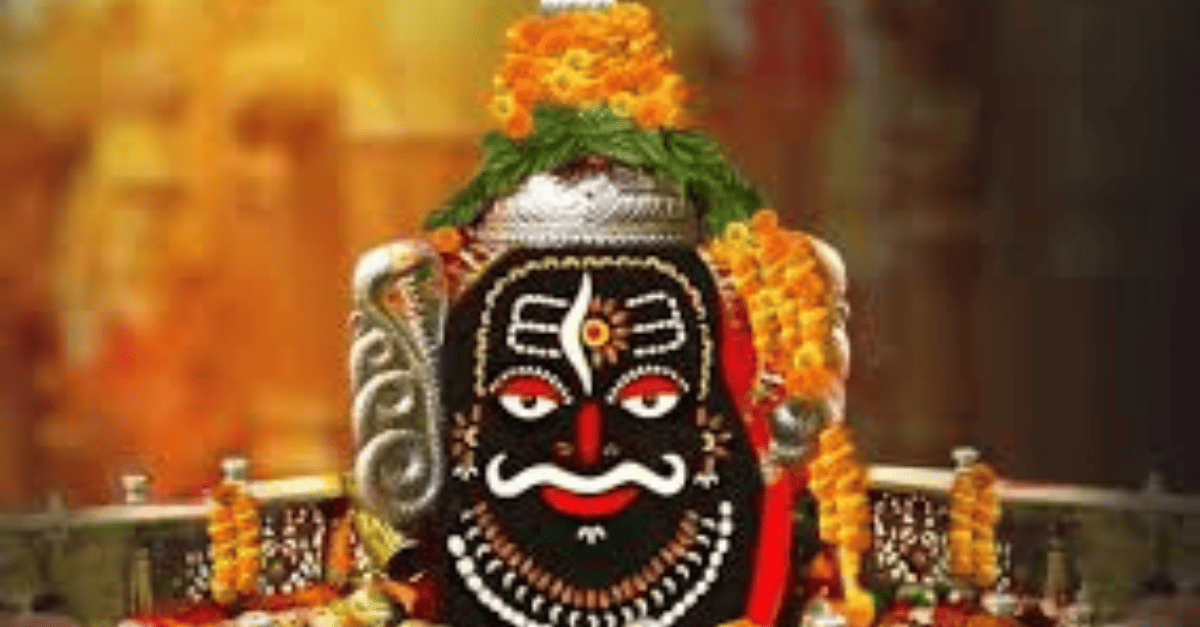
In this comprehensive guide, we take you through the history, mythology, rituals, architecture, travel tips, festivals, and nearby attractions of the sacred Mahakaleshwar temple, offering spiritual and practical insights for devotees and travelers alike.
The Spiritual Significance of Mahakaleshwar Jyotirlingam
The Mahakaleshwar Jyotirlingam is one of the Dwadasha Jyotirlingas, the twelve most sacred abodes of Lord Shiva. What sets Mahakaleshwar apart is that it is the only Jyotirlinga facing south (Dakshinamukhi), which holds special significance in tantric and Shaivite traditions.
The Shiva Lingam here is believed to be Swayambhu, meaning it emerged by itself from the earth and not installed by anyone. Worshipped as Mahakala, Lord Shiva takes on the fierce form of time and death, granting liberation (moksha) to his devotees.
Ujjain, historically known as Ujjayini, is one of the seven Moksha-puris or salvation cities in Hinduism, making Mahakaleshwar a powerful spiritual destination.
Mythological Legends Associated with Mahakaleshwar
The origin of the Mahakaleshwar temple is deeply rooted in mythology and devotion:
1. The Demon Dushan
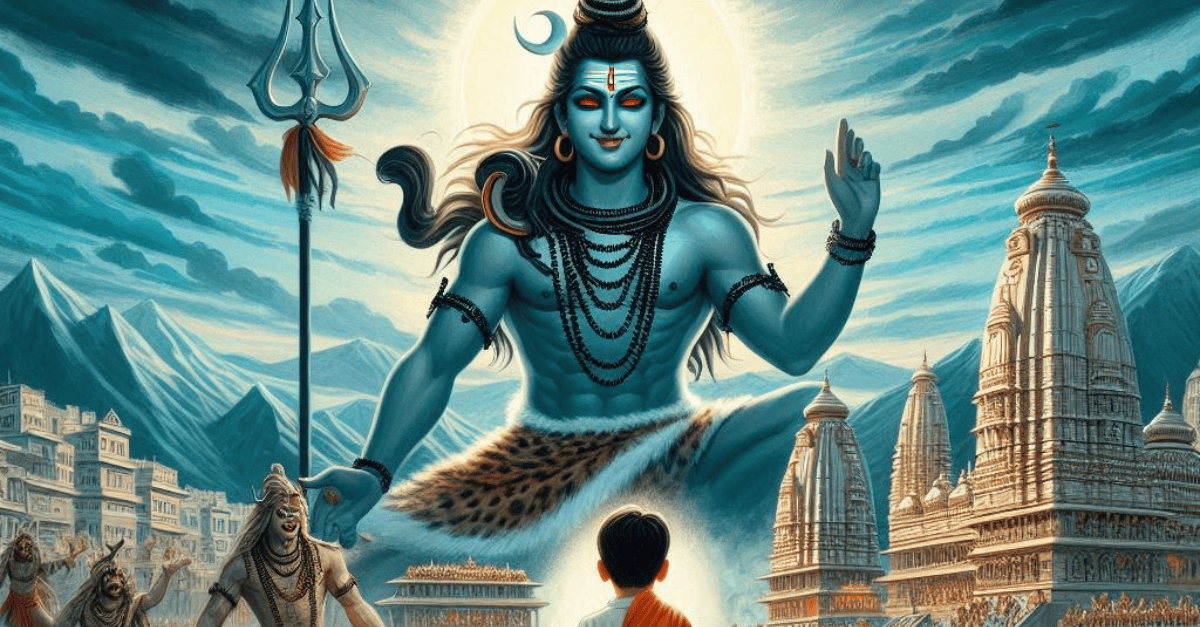
According to the Shiva Purana, Ujjaini was once ruled by a virtuous king named Chandrasena, who was a great devotee of Lord Shiva. A young boy named Shrikar, inspired by the king’s devotion, also began worshipping Shiva. When demonic forces led by Dushan tried to attack the city, Lord Shiva appeared from the ground in a ferocious form and annihilated them. He stayed back as Mahakala, the protector of Ujjain.
2. The Story of the Jyotirlinga
It is said that the Mahakal Jyotirlinga emerged on its own, not carved or placed by human hands. This divine manifestation adds to its mystical power, making it one of the most sought-after shrines in the Jyotirlinga circuit.
Historical Background of Mahakaleshwar Temple
The Mahakaleshwar temple finds mention in numerous ancient texts, including the Puranas, Meghadūta by Kalidasa, and the Mahabharata. Over the centuries, the temple has been destroyed and rebuilt by various dynasties and devotees.
Historical Events:
- The original temple was said to have been built in the 4th century BCE.
- It faced destruction during the invasion of Iltutmish in the 13th century.
- The current structure was rebuilt by the Maratha ruler Ranoji Shinde in the 18th century.
- Renovations and expansions have continued under the Scindias and the Government of Madhya Pradesh.
- The temple has not only survived centuries of turmoil but has continued to be a center of Shaivism, culture, and power.
Architectural Beauty of Mahakaleshwar Temple
Built in Bhumija, Maratha, and Chalukya architectural styles, the temple is a stunning blend of ancient and medieval Indian design.
Main Feature
Garbhagriha (Sanctum Sanctorum): Houses the Swayambhu Mahakal lingam, open for darshan.
Five Levels: The temple has five levels, including an underground sanctum where special rituals are performed.
Spire and Mandapas: The spire rises above intricately carved pillars and mandapas, showcasing fine stone work.
Koti Tirtha (Temple Tank): A holy tank used for ritual baths and ceremonies.
Every stone and carving echoes the devotion of thousands of years, making Mahakaleshwar a masterpiece of sacred architecture.
Also read: Shri Somnath Jyotirlingam: A Complete Guide To The Sacred Shiva Temple
Unique Rituals and Daily Worship
One of the highlights of the Mahakaleshwar temple is its unique rituals, especially the Bhasma Aarti.
1. Bhasma Aarti (Ash Ritual)
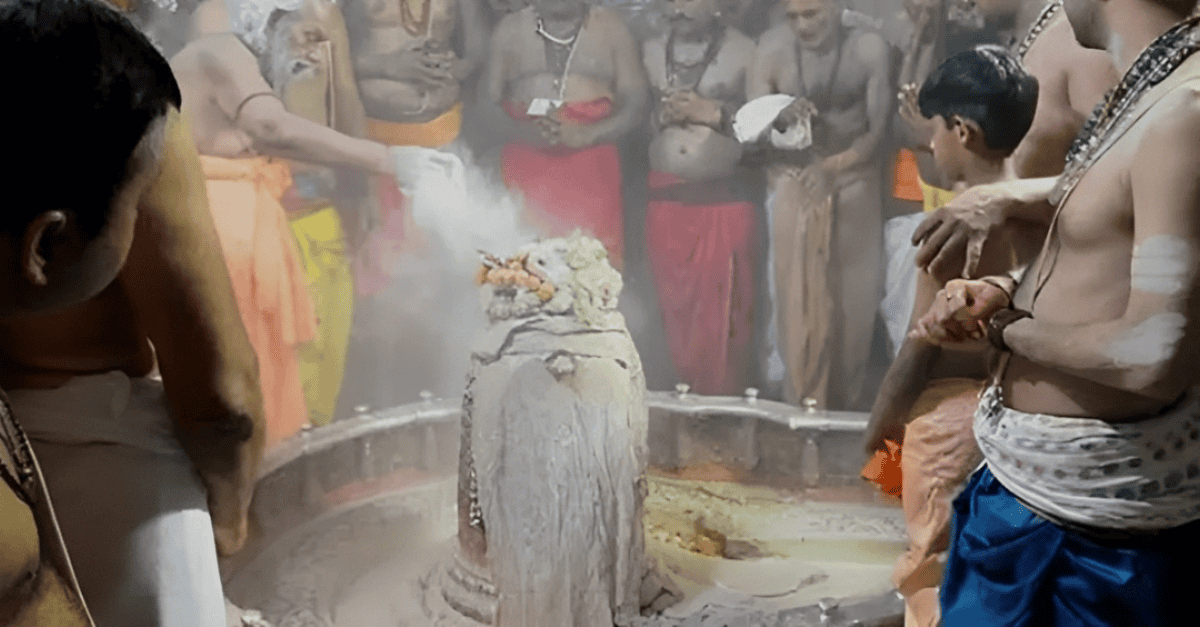
Performed every morning at 4:00 AM, this is the only aarti where sacred ash (bhasma) is used to anoint the Shiva Lingam.
It is believed that ashes from a cremation ground were traditionally used, symbolizing the cycle of life and death.
Devotees must register in advance, and strict dress codes are followed.
2. Other Daily Rituals
Rudrabhishek – Performed with water, milk, honey, and ghee while chanting Vedic mantras.
Laghu Rudra and Maha Rudra Pooja
Evening Aarti – Held with full devotion and musical instruments.
Participating in these rituals brings spiritual bliss and a deep connection with the divine Mahakal.
Festivals Celebrated at Ujjaini Shri Mahakaleshwar Jyotirlingam Temple
The temple celebrates many festivals with grandeur and religious fervor:
1. Maha Shivaratri
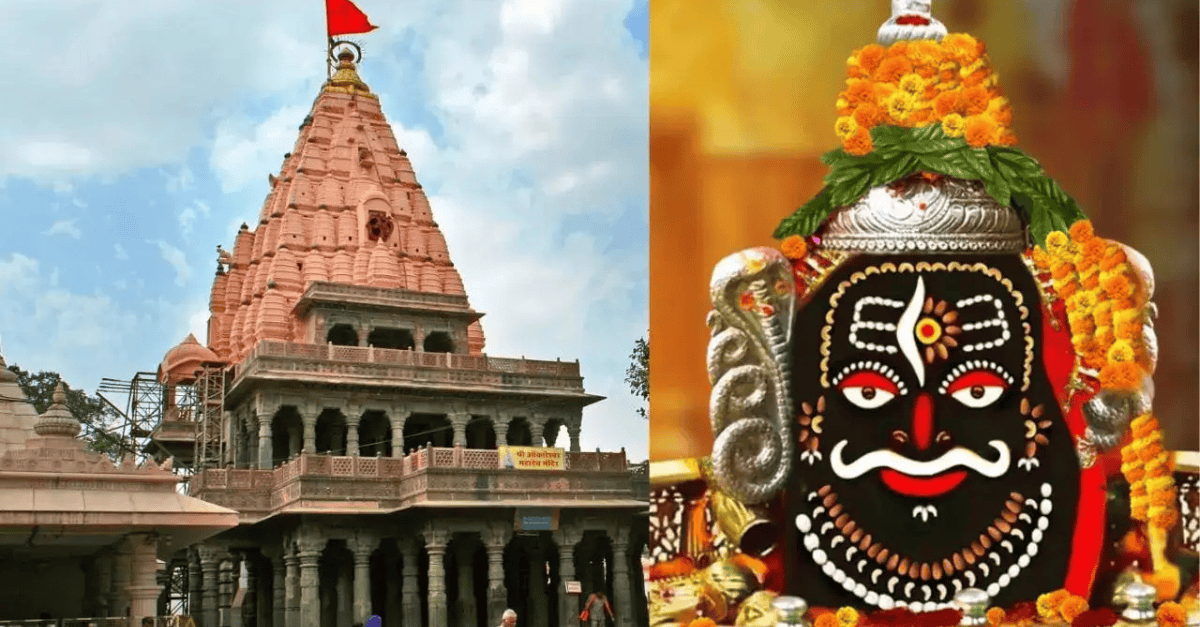
The most important celebration, observed with night-long prayers, processions, and massive gatherings of devotees.
2. Nag Panchami
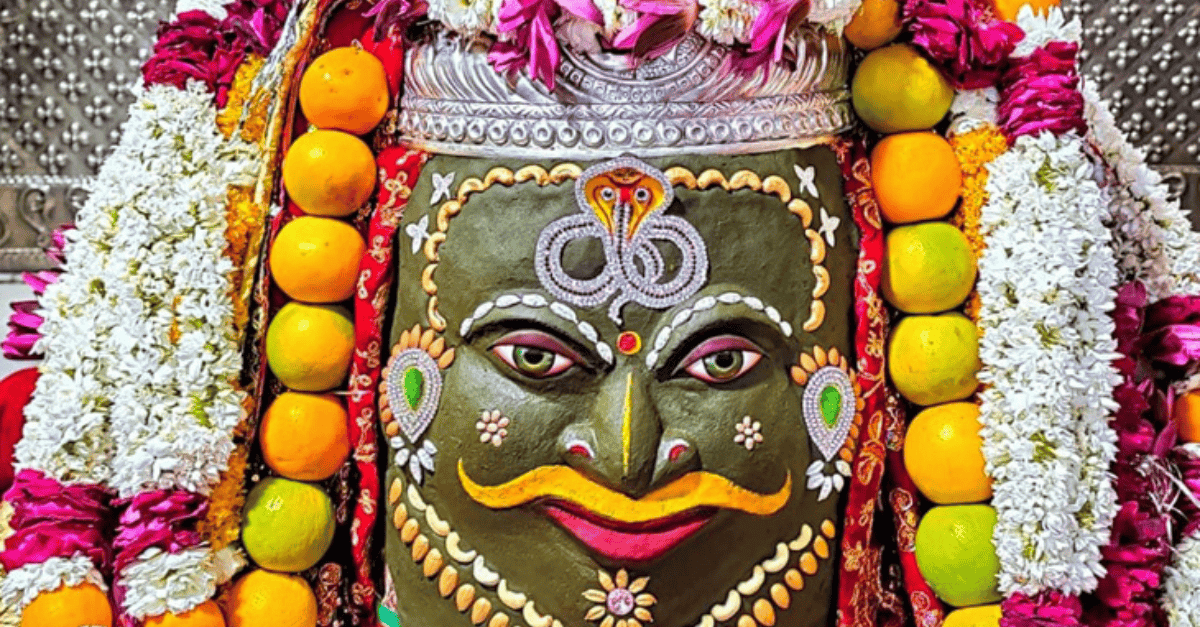
The Naga deities are worshipped and a grand snake idol is displayed.
3. Sawari (Shiv Ki Sawari)
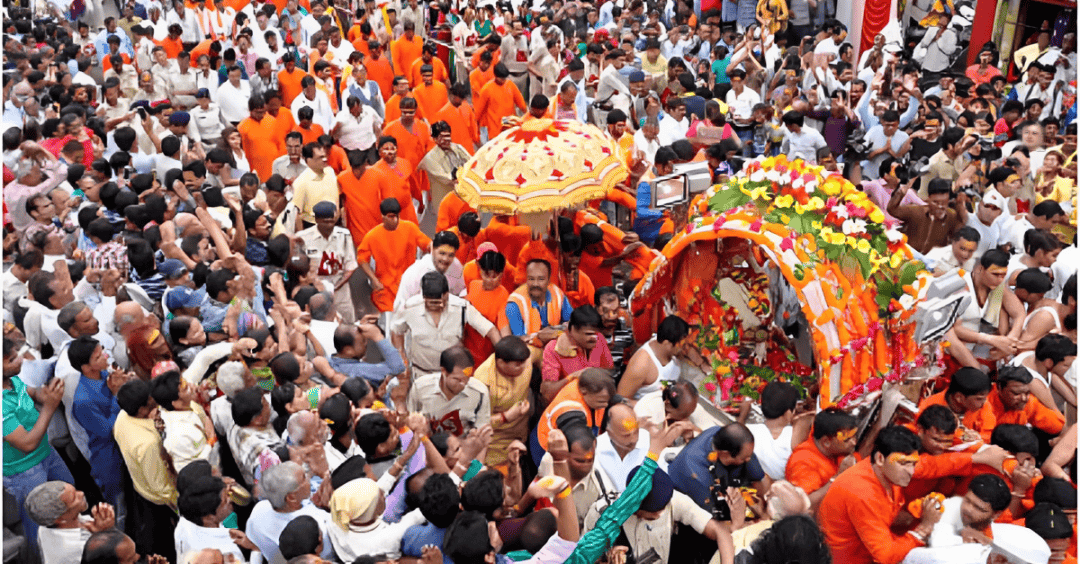
Every Monday during Shravan Maas, Lord Mahakal’s grand procession (sawari) is taken out in Ujjain’s streets.
4. Kartik Deepam and Diwali
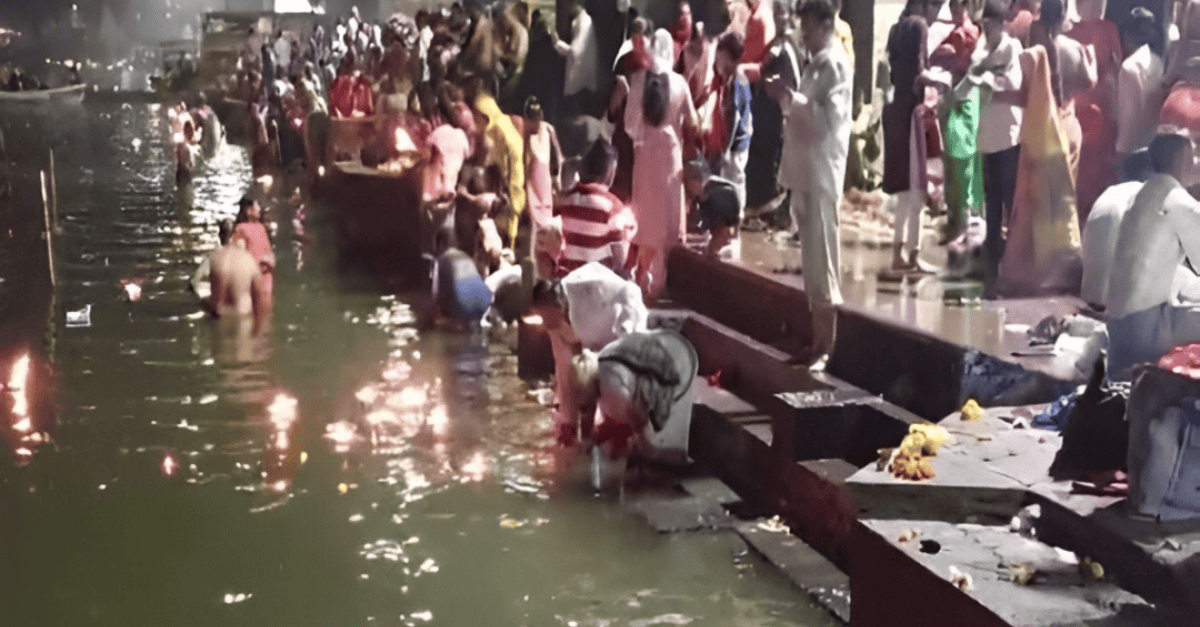
The temple is adorned with thousands of lamps and spiritual programs are organized.
These festivals amplify the spiritual energy of Ujjain and make it a vibrant pilgrimage hub.
How to Reach Mahakaleshwar Temple, Ujjain
The temple is easily accessible by road, rail, and air.
By Air
Nearest Airport: Devi Ahilyabai Holkar Airport, Indore (55 km)
Connected to major cities like Delhi, Mumbai, and Ahmedabad.
By Rail
Ujjain Junction (UJN) is well-connected with trains from across India including Delhi, Mumbai, Bhopal, and Jaipur.
By Road
Ujjain is well-connected by NH52 and NH3.
Buses and taxis are available from nearby cities like Indore, Bhopal, and Dewas.
Accommodation Options in Ujjain
There are ample accommodation options near the Mahakaleshwar temple for all budgets.
1. Temple Guest Houses
Mahakal Dharamshala
Simhastha Atithi Gruh
Clean and economical stays are arranged by the temple trust.
2. Hotels Nearby
Hotel Anjushree
Rudraksh Club & Resort
Hotel Imperial Grand
OYO budget hotels are also available in Ujjain.
Book your stay in advance, especially during festivals or Shravan Maas.
Nearby Attractions in Ujjain
Ujjain is a spiritual and cultural city, offering several places of interest beyond Mahakaleshwar:
1. Harsiddhi Temple
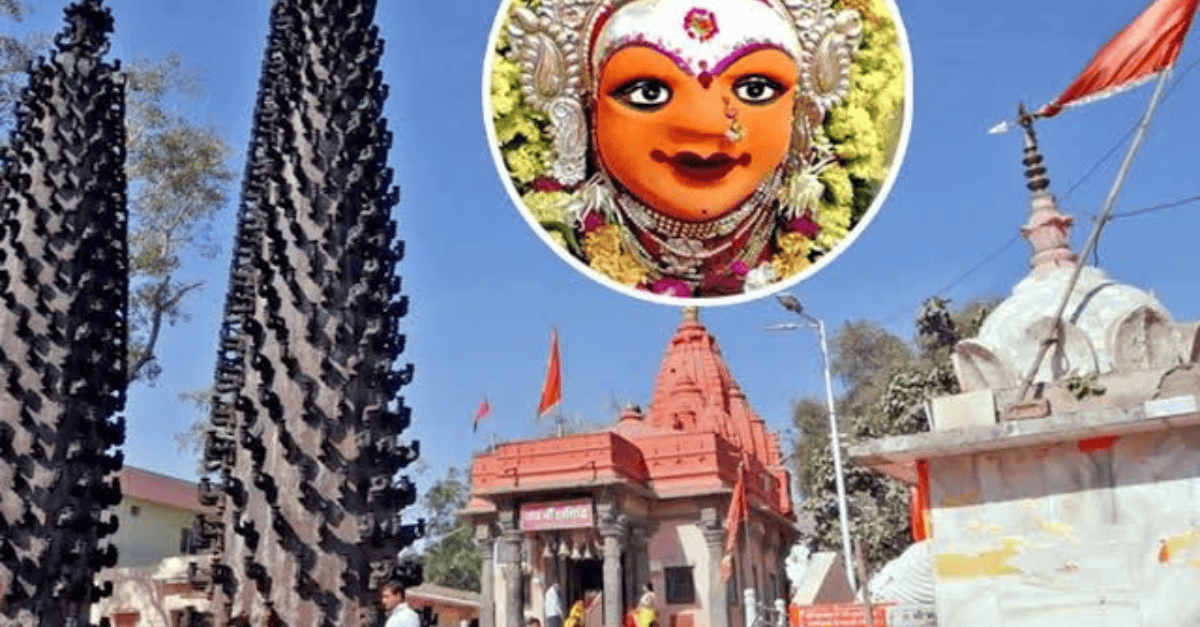
One of the 51 Shakti Peethas, dedicated to Goddess Durga. Built in red sandstone with twin lamp towers.
2. Kaal Bhairav Temple
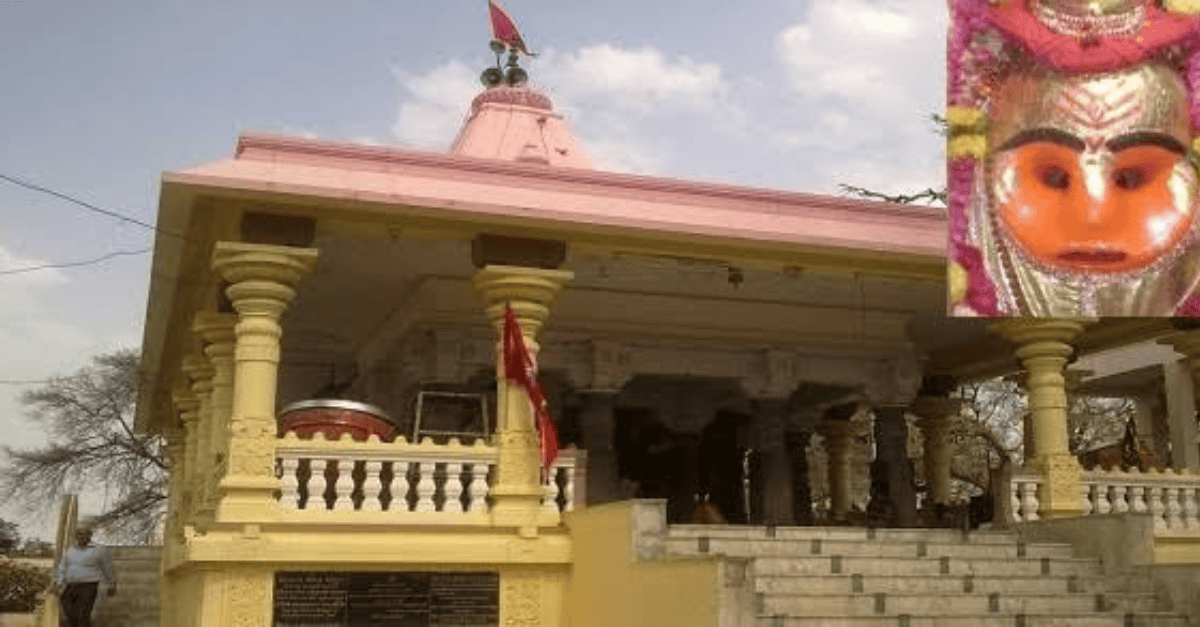
An ancient temple dedicated to Kaal Bhairav, the fierce form of Lord Shiva. Liquor is traditionally offered here.
3. Ram Ghat
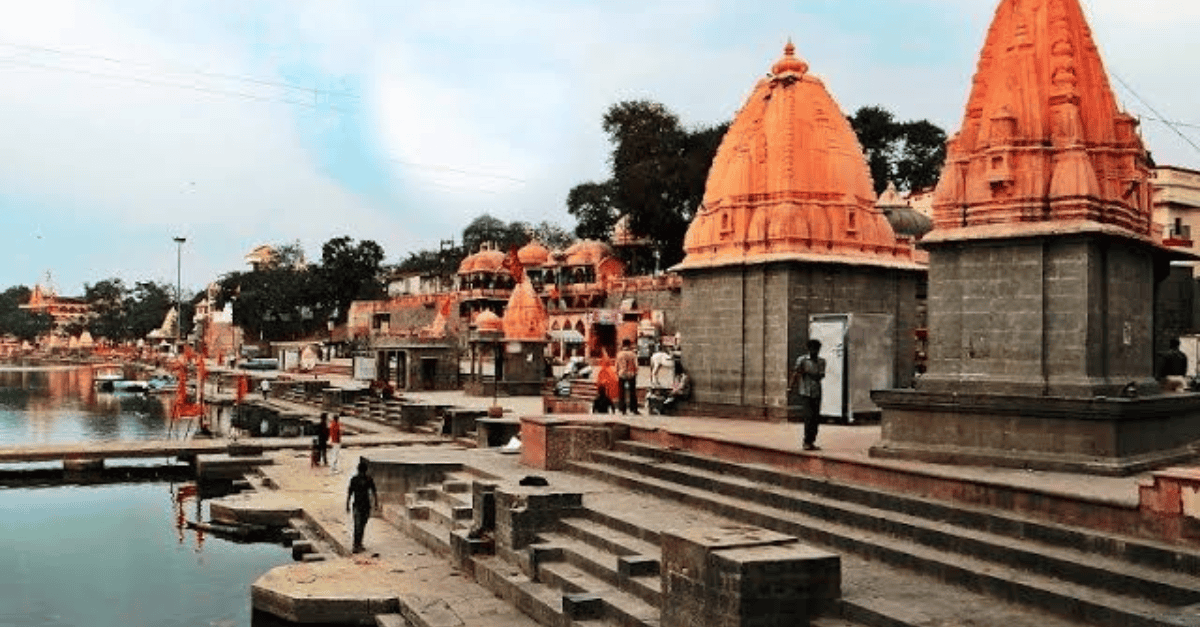
Located on the Kshipra River, it’s the main bathing ghat during the Kumbh Mela and hosts evening aartis.
4. Sandipani Ashram
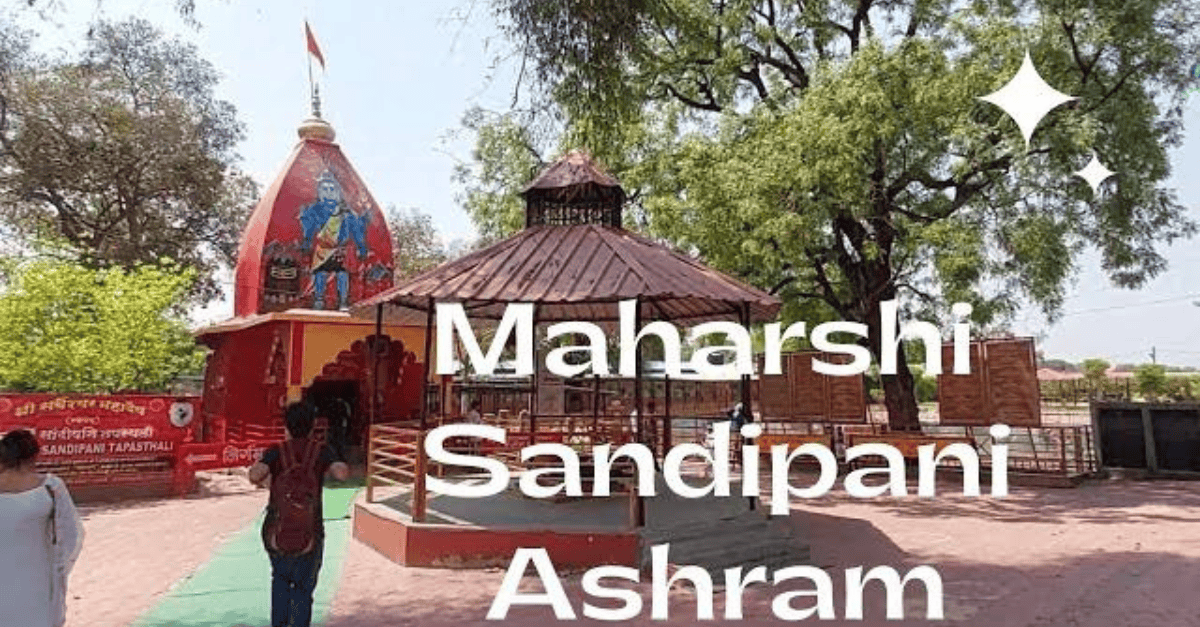
Believed to be the gurukul where Lord Krishna and Sudama studied under Rishi Sandipani.
5. Chintaman Ganesh Temple
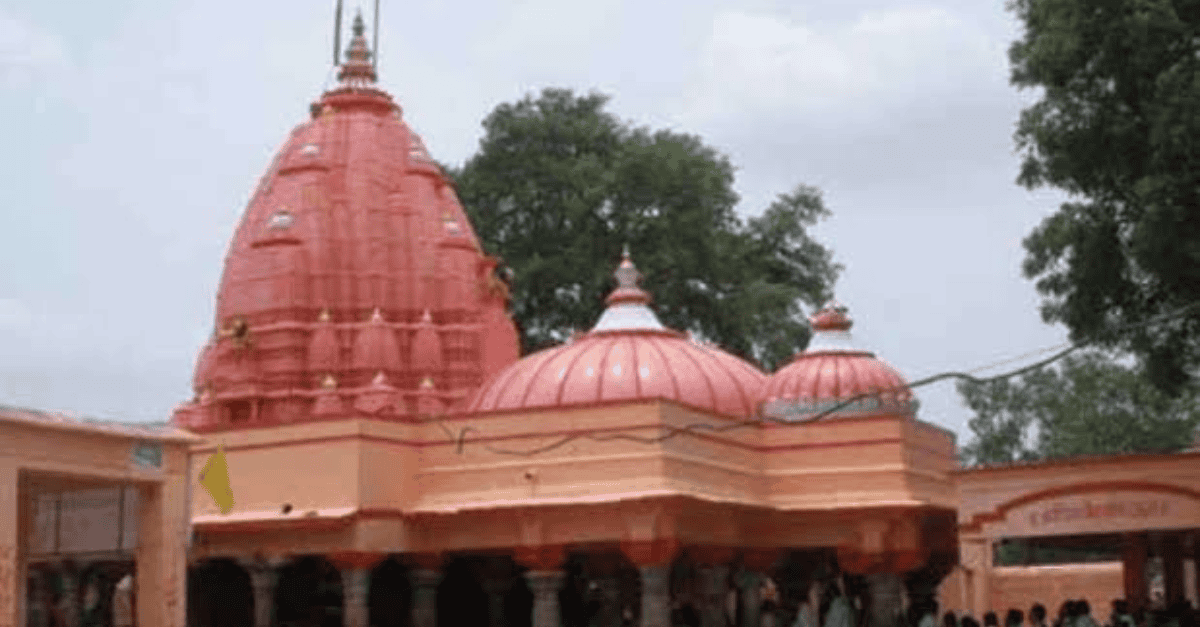
An ancient temple dedicated to Lord Ganesha, known as the problem solver (Chintaman).
Best Time to Visit Mahakaleshwar
The temple is open year-round, but the best time to visit depends on your preference for weather or festival experience.
Ideal Time:
October to March: Pleasant climate, ideal for temple visits and sightseeing.
July to September: Shravan Maas and monsoons—high devotion but heavy rainfall.
February/March: Maha Shivaratri is the grandest time but also the most crowded.
Darshan Timings and Visitor Guidelines
Temple Timings
Open: 3:00 AM – 11:00 PM
Bhasma Aarti: 4:00 AM (requires advance registration)
Evening Aarti: 7:00 PM – 9:00 PM
Entry Guidelines
Mobile phones, cameras, and leather items are not allowed inside.
Dress modestly and follow decorum.
VIP Darshan and Special Pooja passes can be booked online.
Online Services and Booking
The Mahakaleshwar temple offers the following services via its official website:
Bhasma Aarti Registration
Pooja Booking
Accommodation Booking
Donations and Seva Booking
Live Darshan
Official Website: https://shrimahakaleshwar.com
The Mahakal Lok Corridor
In 2022, the Mahakal Lok project was inaugurated to enhance the pilgrimage experience:
Features:
A 900-meter spiritual walkway connecting the Mahakal temple with Rudrasagar Lake.
108 ornate pillars, murals, fountains, and sculptures of Shiva’s divine stories.
Landscaping, digital guides, and photo spots for devotees and tourists.
This corridor enhances Ujjain’s spiritual tourism and offers a peaceful path to the Mahakal shrine.
Continue reading: Srisailam Mallikarjuna Jyotirlingam: A Complete Guide to the Sacred Shiva Temple
The Ujjaini Shri Mahakaleshwar Jyotirlingam is not just a temple—it is the heartbeat of spiritual India. With its mythological depth, architectural magnificence, unique rituals, and powerful energy, Mahakaleshwar stands as a gateway to divine consciousness and liberation.
A visit to Mahakaleshwar is a soul-awakening journey, where every chant, offering, and aarti brings you closer to the cosmic truth that time is eternal, and Mahakal is its master.
Whether you are a pilgrim, a seeker, or a traveler, the call of Mahakal is one you must answer at least once in a lifetime.
Follow svhubstuff website for more curated travel and tourism updates


